This entry is a bit difficult to write, but we hope it is still easy to read. During the past days in Hyderabad and Bangalore, we have seen only a few really important sites, but learnt very much about the country. The reason is that we stayed in rather normal and unspectacular cities, where we made intensive use of couchsurfing. There, we had many impressive and very personal experiences, which however are rather difficult to share.
After a relaxing 30 hours train journey from Varanasi to Hyderabad, our host Anand was so friendly to catch us up at the train station and drove us to his flat. 1000 taxi drivers hated him for this, but we were very happy he took his time for us, just as during the following days. Anand and his wife Anusha are really inspiring persons, because he knows at least three different worlds: the small village where he grew up, the US where he lived during 5 years and Hyderabad, where he studied and now lives again. Talking with him is priceless since he can compare and has reflected a lot about many things. From what he said we learnt a lot about India’s problems, especially about corruption, education, the relationship between Muslims and Hindus and influences of the caste system. But from his way of telling this and from what we experienced together, we started to love his country.
Although Hyderabad is not that touristy, it has still some highlights to offer. It was founded in the 16th century by Persians and actually is a Muslim city. Today Muslims account for 30% to 40% of the population and we noted that they are much more conservative than in other countries: it seems nearly 50% of the women cover their face completely. The former Muslim rulers erected lots of mosques and palaces, but also the “Seven Tombs”, which are so beautiful that it is a pity the buried only can enjoy these mausoleums in their death. We were equally impressed by the “Golkonda Fort”, the proof that even military complexes can provide a high quality of life. You find lovely parks, ample living buildings and great acoustic effects. Further, we visited the old town with its “Charminar Gate”.
Thanks to Anand, we also had the chance to see the rural country site around Hyderabad, where people often do not speak neither Hindi nor English, but just the local language. Nevertheless, they are friendly and willing to invite you. On the same day, we visited a textile factory, where they produce handmade cloths. Those are used for saris or bed-covers and additionally are exported. Up to 5000 workers are employed there and we could follow the whole process from marking the patterns to dyeing to weaving, on 2000 weaving machines. Although Indian textile industry does not have the best reputation in Europe, our impression was more favorable. Surely, they did not show their worse behavior in our presence, but the interaction and atmosphere seemed quite agreeable to us. The workers smiled when we interrupted the monotony, employees from different castes and disabled people work together, they have a training center and the working time is bearable, lasting from 9 to 6. Of course, even if labor is cheap in India, we had the impression that also the not-so-well-off can profit from international trade and division of labor. Burning factories and child exploitation in Bangladesh or Sri Lanka are not the only result of globalization.
By coincidence, the evening before we got another couchsurfing invitation for a dinner at CJ’s apartment. Apart from being a great cook, he is a manufacturer and exporter of designer clothes. He told us a lot about international trade relationships and given that he exports to all over the world, he knows lots of countries, from NZ to Somalia. He also has lived in China and from his different perspective he got the same positive impression as we had. Whenever he needs machine work, he produces in China, because in India industry suffers from the power crisis, such that companies have to get by with 4 hours electricity per day. A reason is that corruption prevents India from constructing the necessary power stations. When we now tell you that Nepal imports most of its electricity from India, you know how corrupt Nepal should be ….
Our next destination was Bangalore, the most important city in South India, which we reached after a comfortable night bus ride. Again, we were hosted and again we were lucky. Our host Madhu showed a great hospitality and did so much for us. He is a construction engineer who has seen a lot of the world. After the fall of the USSR, he worked and lived in Azerbaijan before moving to Dubai. During the boom he was involved in many big projects, after the crash in 2010 (which by the way was not caused by declining oil prices, since Dubai has no oil at all!) he moved back to India. During a super short cricket game of only 3 and a half hours he explained the rules to us and together with him we explored Bangalore and saw all the different faces the city has to offer: from the most up to date western-style bar and lounge to the traditional South Indian restaurant. We realized that actually Bangalore is a pretty green metropolis of about 7 million people. It is booming and attracts lots of new inhabitants. Nonetheless, it is lacking a bit an urban center. That it is so widespread contributes to a comparatively relaxed atmosphere, but on the other hand getting around becomes difficult. The most important site is the “Bangalore Palace”, home of the former maharajahs. They used to have a life in luxury and spent their time with abundant banquets, inviting nobles from all over the world, or with tiger hunting – which basically meant that the servants chased the tiger towards the veranda, where the maharajah could conveniently fulfill his act of bravery and shoot the tiger without leaving his throne. We were quite surprised how eager they were to adapt to European life-style, in the palace you find every architecture from baroque to art-nouveau. Just have a look at the pictures and remember this is India, not Windsor.
The palace is also a popular place for glamorous events, including concerts of Mark Knopfler, Sting or the Rolling Stones, and – above all – weddings. At the same day we saw the preparation for a wedding ceremony and noted how opulent Indian marriages normally are. Thousands of guests are invited, the celebration can last several days, it is sometimes announced all over the town and they have more flowers than every botanical garden. This opulence and the fact that the word “love” is used inflationary stands in a certain contrast to the fact that almost all marriages are arranged matches, where social status and dowry play major roles. It is not that they have to marry whoever the parents present. Indeed there is some room for choice, but a western-like love wedding is definitely not the norm.
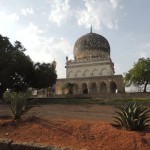
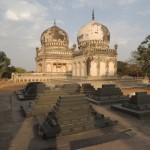
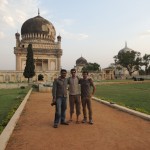
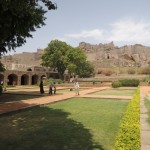
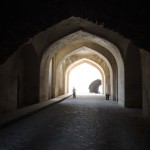

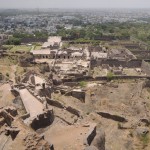
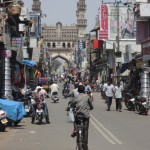
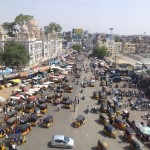
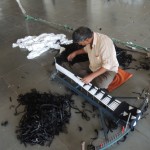
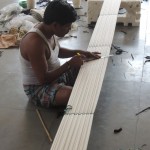
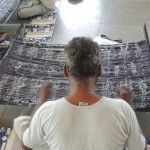
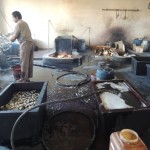
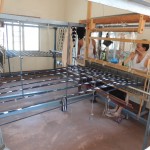
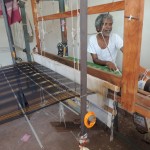

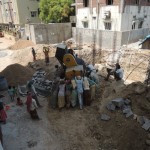
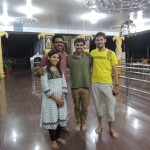
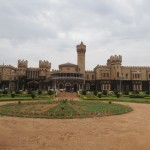
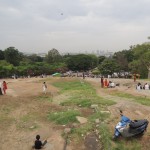
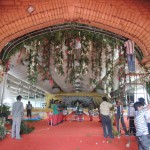
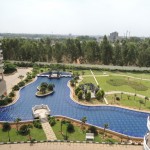
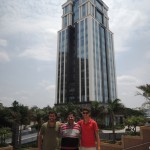
Hallo Thomas und Steffen, wir freuen uns, dass es euch gut geht und ihr so viel Aufregendes auf eurer sehr abwechslungreichen Reise erlebt habt und erlebt und erleben werdet. Bei uns geht es jetzt etwas ruhiger zu, nachdem wir Indonesien verlassen und von Singapur aus nach Hause geflogen sind… In einer Woche geht es nach Korsika. Euch weiterhin eine sichere Reise… LG Arno und Gitti